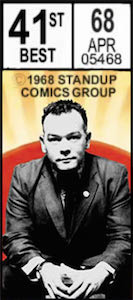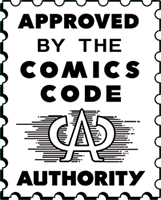Stewart Lee's Comedy Vehicle Series 2Amongst the Crowd
Most of the discussion around social media and TV focuses on the technologies being invented, or the potential business models (or lack of them) emerging. But we don’t often talk about what it means for the writers, directors and other talent involved in making TV. This Guardian article shows a mixed picture, with Iain Morris, writer of The Inbetweeners, saying he loves Twitter, but the constant stream of feedback can be overwhelming:
“I watched the first three episodes of series three from abroad so effectively watched them via Twitter and I found it crippling. It made me rethink the fundamentals of how TV is made. Over nine months you make hundreds of decisions – character, plot, jokes. You used to get a review the following day from someone who had seen the whole and had an opinion of that – broadly they liked it or didn’t, and there were good bits or bad bits. Now you see every decision you made being torn apart in real time as it goes out and it can cripple you“.
This is one of the most interesting challenges facing creative talent right now – how is this new relationship with audiences changing the way you make your work? How much should you listen to the audience’s response? What kind of techniques can you use to talk to your audience, and how can you maintain control of the world you are creating? This isn’t about technology or ‘transmedia’, but a fundamental rethinking of how you tell stories, and in order to understand it, we need to look back a couple of decades to see how TV ended up being so cut off from its audience in the first place.
On Christmas Day 2008, the BBC showed a documentary about the making of Blackadder, the seminal comedy series starring Rowan Atkinson, to mark the 25th anniversary of the first series. Blackadder didn’t really find its groove until the second series, when Ben Elton was recruited to the writing team by Richard Curtis, and in a conversation about how they met, Curtis offers a remarkable anecdote about what it was like to make TV in the 1980s:
“This was before the days of ratings … I still don’t know how many people watched any episode of Blackadder. I used to wander round Shepherd’s Bush, looking in people’s windows, particularly people in basement flats, to see whether or not anyone was watching Blackadder [series] one … because I didn’t know whether or not it had been successful otherwise.”
Its remarkable now to recall how far removed from the audience TV makers were in the ‘golden age’ of the 1970s & 80s. With only a couple of channels, and no real competition for attention in the living room, shows were broadcast without any significant feedback loop. If you were lucky, you might get a review in the newspapers the next morning, and if you were very lucky you might win a BAFTA or RTS award, but other than that, if you wanted to find out what people thought about your shows, you would have to walk the streets, like Richard Curtis, looking in people’s windows to see if they were watching. There might have been focus groups commissioned from audience research teams, but the results from these would be fed back to schedulers and commissioners, not the writers, producers and performers who were responsible for making the shows themselves.
We’re in a different world now. In the last two years I’ve seen TV commissioners go from being critical of social media to avidly (and often agonisingly) watching twitter streams of their show’s hashtag as the show goes on air. Making TV is different now, not just technically, but socially. There has probably never been a method of storytelling that was as far removed from its audience as TV was in the 70s and 80s, but nowadays TV is firmly back amongst the crowd, and hearing every mutter and comment is a strange and not altogether pleasant experience for some.
Here is a fantastic trailer for Stewart Lee’s Comedy Vehicle on BBC2 which satirises the sometimes glib and pointless attempts to make TV work for a social media age. Kevin Eldon, playing a BBC Social Media Strategist, walks Stewart through a presentation about ‘Social Stew’ which includes Facebook homepages, cross linking with other BBC brands and mobile apps, none of which actually have anything to do with his style of comedy, or the show itself.
At the end, Stewart Lee agrees to recording a piece to camera, in which he says:
“In the mid-70s, 30 million people watched the Morecambe & Wise Christmas Special on BBC Television, and that’s what television used to be about – participating in a massive shared experience that helped bind a fragmented country together. Why not watch Stewart Lee’s Comedy Vehicle alone, on the iPlayer, in your own time, and be part of nothing?”
Its a great satire of a situation familiar to anyone who has worked in TV and New Media in the last few years. But this last statement rings hollow. According to Richard Curtis’ memories of Blackadder in the 80?s, TV wasn’t a massive shared experience, but an isolated one, with the storytellers on one side of the glass screen, and the audience, invisible, on the other.
It seems even stranger when you watch Stewart Lee’s show, in which he subtly and expertly shifts register between the audience in the comedy club around him and the audience at home. In one masterly sequence in Episode 2 (about 21mins in), he is in the middle of an sketch about buying a house in rural Wales where he takes a pretend mobile phone call from an Estate Agent. Halfway through the call, he pauses, and looks furtively up at the audience a few times. This signals a shift in the conversation, which now becomes about whether the sketch is going well, with the imaginary Estate Agent offering advice on his act, all suggested solely through Lee’s responses:
“[Lee looks up furtively at the club audience whilst pretending to hold a mobile phone]… about half the audience… [audience laughs]… well, more now, obviously… it did feel touch and go.. [looks up at audience, paces around]… yeah, I did think it was worth persisting with… [audience laughter]… some people really like it…. [listens some more before moving his hand from his ear and addressing the club audience] .. he says he would have bailed out of this bit on the phrase ‘visible otters’ [huge audience laughter]“
He then turns to one of the TV Cameras and resumes his conversation with the ‘Estate Agent’:
“What will the people at home make of it? I’ve absolutely no idea… it’s the sort of thing that I think, if you’re in the room can be quite exciting, but watching this at home I imagine would be terribly tedious [huge audience laughter, Lee turns to face the club audience and moves his hand from his ear].. he’s reminded me that in Episode 1 of the first series, during a similar bit, about rappers, audience feedback shows that about 300,000 viewers turned off…[huge audience laughter]… well, you know… fuck ’em is what I say…”
Its a stunning routine, with subtle shifts of register between conversations with the imaginary estate agent, the club audience and the viewing audience at home signified only through body language and a script which seems hesitant and improvised, but is clearly incredibly tightly structured. Watching it, whether live in the room, at home as the broadcast goes out, or alone on the iPlayer, is a hilarious but unsettling experience, as the routine addresses you directly and makes you aware of the act of watching, and what this watching means to Lee as a performer.
It plays on all the tensions of making TV in an age in which the audience is measured and fetishised by broadcasters, but never really understood. Lee plays on the fear TV makers have of losing audience’s attention, demonstrating his own consummate skill in ‘working the room’ for its attention, and the attention of those watching at home. By changing the register between private conversation (the imaginary Estate Agent) live performance (the comedy club) and broadcast audience (his comments directly to camera) he engages and unsettles us in ways that the Facebook gimmicks and throwaway apps of the ‘Social Stew’ sketch could never dream of doing.
Lee’s comedy is based on stretching an idea to breaking point – reflecting it back to us, feeding on our reaction and then stretching it further still – not cutting it up into lovely bite-sized pieces for the web:
“I’ve already come up with my next show,” says the astute funnyman. It’s called Twitter Ye Not and the strapline will be something like ‘The worse comedian in Britain today as funny as bubonic plague’. I’m annoyed by people who keep saying, ‘why don’t you go on Twitter its really good you have to say something funny in 140 characters’. I want to do completely the opposite. I want to explore one funny idea in 140 minutes.”
[interview from Watford Observer, Jan 2010]
This is what I’m interested in exploring right now. I have always been very inspired by Artangel, for their simple approach to commissioning – they go to very talented artists and ask what they would like to make next, then try and make it happen, regardless of the shape, duration or form of the project. They don’t own their own infrastructure, they don’t have to make ideas fit a schedule, and they aren’t in thrall to the temporary hype around a certain platform or format. They trust talent, and understand that storytelling has to take the shape it needs to take to pack an emotional punch. This could be 140 characters, 140 minutes, or 140 years – whatever is necessary to get the tension just right, to make the audience feel like they’re part of something unique, something that challenges them and makes them look at the world in a different way.
We’re no longer like Richard Curtis, separated from the crowd and reduced to walking the streets, looking for signs of an audience’s laughter through the windows of Shepherd’s Bush basements. Its all out there now, transparent, readable and playful. We can let stories take their own shapes, speak in whatever register we want, and play with the crowd and their expectations. As the noise of the crowd returns, the golden age of TV seems more and more like a blip – a brief moment in time when storytellers were trapped in a glass box, separate from the laughter and feedback of the audience.
We’ve moved from broadcasting to a kind of call-and-response, from being behind the glass screen to being amongst the crowd. Its no surprise that some of the people doing this best are comedians with experience of a live crowd. The ability to deal with hecklers is going to be much more important than the ability to understand technology. Pacing, improvisation, being able to read an audience and understanding the right register to speak in – this is what we need to be exploring now.

